
IEEE Open Journal of Engineering in Medicine and Biology
Scope & Guideline
Transforming patient care with cutting-edge research.
Introduction
Aims and Scopes
- Interdisciplinary Research in Biomedical Engineering:
The journal emphasizes interdisciplinary studies that integrate engineering principles with biological and medical sciences, fostering collaborations that lead to innovative solutions for health-related issues. - Machine Learning and Artificial Intelligence Applications:
A core focus is on the application of machine learning and artificial intelligence in healthcare, including diagnostic tools, predictive modeling, and personalized medicine. - Wearable and Monitoring Technologies:
The journal explores advancements in wearable technologies and remote monitoring systems, emphasizing their role in continuous health assessment and management. - Computational Modeling and Simulation:
Research involving computational modeling and simulations to better understand biological systems and to design medical devices is a key area of interest. - Biomedical Imaging and Signal Processing:
The journal publishes studies on novel imaging techniques and signal processing methods that enhance diagnostic accuracy and treatment efficacy. - Rehabilitation Engineering and Assistive Technologies:
There is a strong focus on engineering solutions for rehabilitation, including robotic systems and assistive devices that improve patient outcomes.
Trending and Emerging
- Digital Twin Technology in Healthcare:
The integration of digital twin technology in healthcare is emerging as a significant theme, allowing for personalized patient care through virtual modeling and simulation of individual health profiles. - Emotion Recognition and Affective Computing:
There is a growing interest in emotion recognition systems that utilize physiological signals for mental health assessments, showcasing the importance of emotional well-being in comprehensive health monitoring. - Advanced Machine Learning Techniques:
Innovative machine learning methodologies, particularly deep learning approaches, are increasingly being applied to various medical fields, including imaging, diagnostics, and predictive analytics. - Telehealth and Remote Patient Monitoring:
The COVID-19 pandemic has accelerated the focus on telehealth solutions and remote patient monitoring technologies, making them a central theme in recent publications. - Wearable Health Technologies:
Wearable devices for real-time health monitoring are gaining traction, with research focusing on their design, effectiveness, and integration into everyday health management. - Sustainable and Eco-Friendly Biomedical Solutions:
Emerging studies are exploring eco-friendly materials and sustainable practices in biomedical engineering, reflecting a growing awareness of environmental impacts.
Declining or Waning
- Traditional Biomechanics Studies:
Research focused purely on traditional biomechanics without integrating modern technologies such as AI or advanced imaging techniques appears to be declining as the field evolves towards more technologically integrated approaches. - Basic Laboratory Studies:
There is a noticeable decrease in publications centered solely on basic laboratory experiments, with a shift towards studies that translate laboratory findings into clinical applications and real-world scenarios. - Single-Modal Monitoring Systems:
As the field moves towards more comprehensive health monitoring solutions, the focus on single-modal systems (e.g., only ECG or only EEG) is waning in favor of multimodal approaches that provide a more holistic view of patient health. - Conventional Rehabilitation Techniques:
Research exploring traditional rehabilitation methods is becoming less prevalent as innovative, technology-driven rehabilitation strategies gain traction.
Similar Journals
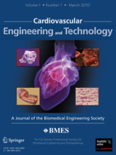
Cardiovascular Engineering and Technology
Bridging Engineering and Heart CareCardiovascular Engineering and Technology, published by SPRINGER, stands as a prominent journal in the fields of Biomedical Engineering and Cardiology. With an ISSN of 1869-408X, this journal bridges the gap between engineering innovation and cardiovascular health by exploring the latest advancements pertinent to cardiovascular technologies and therapies. The journal, currently in its converged years from 2010 to 2024, holds important positions in Quartile 3 of both Biomedical Engineering and Cardiology and Cardiovascular Medicine categories, highlighting its relevance and influence in these domains. Ranked in the 59th percentile for Cardiology and 42nd percentile for Biomedical Engineering, the journal is a valuable resource for researchers, professionals, and students keen on understanding the intersection of engineering solutions and cardiovascular medicine. Although the journal is not open access, it remains highly regarded for its rigorous peer-reviewed content that contributes to the advancement of technology in the cardiovascular field.

International Journal of Online and Biomedical Engineering
Connecting Innovation in Biomedical Engineering and Digital EducationInternational Journal of Online and Biomedical Engineering, published by the Int Federation Engineering Education Societies (IFEES), serves as an essential platform for the dissemination of innovative research in the fields of biomedical engineering and online engineering education. Established in 2005, this Open Access journal promotes wider accessibility and collaboration among researchers, educators, and practitioners worldwide. With an impressive impact factor and recognition in the Scopus rankings, where it ranks in the 69th percentile for General Engineering and 43rd percentile for Biomedical Engineering, the journal is positioned as a critical resource in advancing interdisciplinary knowledge and fostering technological advancements. The scope of the journal includes a diverse range of topics, enhancing its relevance in both academia and industry. As it converges from 2019 to 2024, the journal continues to embrace cutting-edge research that bridges online learning and biomedical engineering, encouraging submissions that reflect the dynamic interplay of these vital domains. Researchers, professionals, and students are invited to contribute and benefit from the growing repository of knowledge that this journal offers.
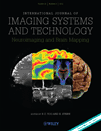
INTERNATIONAL JOURNAL OF IMAGING SYSTEMS AND TECHNOLOGY
Unveiling the Future of Imaging TechnologiesINTERNATIONAL JOURNAL OF IMAGING SYSTEMS AND TECHNOLOGY, published by Wiley, is a leading journal dedicated to advancing the field of imaging systems and technologies. With an ISSN of 0899-9457 and E-ISSN 1098-1098, this esteemed journal offers a platform for high-quality research spanning essential interdisciplinary areas, including Biomedical Engineering, Computer Science, and Health Informatics. Recognized for its impactful contributions, it holds a commendable position in the Q2 quartile across multiple categories as of 2023. The journal boasts an excellent Scopus ranking, with notable acknowledgments like rank #49 out of 333 in Radiology, Nuclear Medicine, and Imaging, showcasing its relevance and importance in the academic community. Publishes annually from 1989 to 2024, it aims to bridge gaps in knowledge and foster innovative developments through rigorous peer-reviewed articles. Though it operates under a traditional access model, the journal maintains an accessible repository of cutting-edge research, making it indispensable for researchers, professionals, and students alike seeking to stay at the forefront of imaging technology advancements.
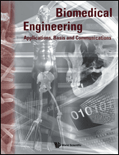
BIOMEDICAL ENGINEERING-APPLICATIONS BASIS COMMUNICATIONS
Advancing biomedical innovation through rigorous research.BIOMEDICAL ENGINEERING-APPLICATIONS BASIS COMMUNICATIONS is a prominent journal dedicated to the dynamic field of biomedical engineering, published by WORLD SCIENTIFIC PUBL CO PTE LTD. Since its inception in 1992, the journal has provided a platform for the dissemination of high-quality research and innovative applications within the biomedical engineering domain. Despite its current Q4 ranking in multiple categories such as Bioengineering and Biomedical Engineering, the journal serves as an essential resource for researchers and professionals seeking to explore the latest developments and practical applications in this interdisciplinary field. The journal is based in Singapore, reflecting the region's growing influence in scientific research and technology. Although it does not offer open access, it continues to attract submissions that enrich the scientific dialogue within its community. With a commitment to fostering knowledge and research collaboration, this journal remains a vital contributor to the ongoing advancements in biomedical technology and engineering.

Physical and Engineering Sciences in Medicine
Fostering Collaboration for Cutting-Edge Medical SolutionsPhysical and Engineering Sciences in Medicine is an esteemed peer-reviewed journal published by SPRINGER, dedicated to advancing the interdisciplinary fields of biomedical engineering and biophysics. With an ISSN of 2662-4729 and an E-ISSN of 2662-4737, this journal has carved a niche for itself since its inception in 2020. Situated in the Netherlands, it serves as a global platform for innovative research and developments that bridge the physical sciences and engineering with medical applications. The journal boasts a commendable range of quartile categorizations, highlighting its impact in various sectors including Instrumentation (Q1), Radiology (Q2), and Biotechnology (Q2). Its Scopus rankings further emphasize its relevance and quality, placing it in the top 15% in several categories. Being an Open Access title, it promotes the dissemination of knowledge, ensuring that vital research is accessible to all, thereby fostering collaboration among researchers, professionals, and students alike. The journal's objectives include promoting cutting-edge research, enhancing biomedical technology, and addressing complex health challenges through innovative engineering solutions, establishing it as a vital resource in the scientific community.

TECHNOLOGY AND HEALTH CARE
Revolutionizing Healthcare: Where Technology Meets CareTECHNOLOGY AND HEALTH CARE, published by IOS PRESS, stands as a prominent interdisciplinary journal dedicated to the integration of technology within the healthcare sector. With an ISSN of 0928-7329 and an E-ISSN of 1878-7401, this journal has been a vital resource since its inception in 1993, providing insights and advancements in various categories including bioengineering, biomedical engineering, health informatics, and more. Though it currently holds a Q4 classification in several fields and Q3 in others, it actively contributes to the dialogue surrounding innovative methodologies and practices that enhance healthcare delivery. Researchers, professionals, and students will find the journal invaluable for its diverse range of studies that explore the convergence of technology and health. Its commitment to fostering impactful research continues to reinforce its relevance in the evolving landscape of healthcare technology.
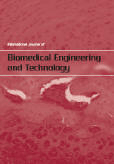
International Journal of Biomedical Engineering and Technology
Advancing Healthcare Through Innovative EngineeringThe International Journal of Biomedical Engineering and Technology, published by INDERSCIENCE ENTERPRISES LTD, serves as a pivotal platform for the dissemination of innovative research in the field of biomedical engineering. This journal, with ISSN 1752-6418 and E-ISSN 1752-6426, has been a valuable resource since its inception in 2007, boasting a converged publication timeline extending to 2024. Based in the United Kingdom, the journal aims to bridge the gap between engineering and biomedical sciences, facilitating interdisciplinary collaboration. As reflected in its 2023 Scopus ranking in the Q4 quartile of Biomedical Engineering, the journal remains accessible for researchers at various stages of their careers, contributing to its significance in promoting advancements in healthcare technologies. While currently not an open-access publication, the journal remains dedicated to enriching the biomedical engineering community by presenting novel research that addresses critical challenges, ultimately aiming to improve patient outcomes and drive innovation in medical devices and therapies.

Engineering Journal-Thailand
Advancing engineering knowledge, one article at a time.Engineering Journal-Thailand, published by Chulalongkorn University, Faculty of Engineering, is a prominent academic journal dedicated to advancing knowledge and research in the diverse field of engineering. With an ISSN of 0125-8281 and an unwavering commitment to quality, the journal has established a substantial presence in the academic community since its inception in 2009. As of 2023, it is ranked in the Q3 category for Engineering (miscellaneous) and has achieved a Scopus rank of 137 out of 307, placing it in the 55th percentile of general engineering journals. Although it operates without open access, its impact within the engineering domain is significant, providing a vital platform for researchers, professionals, and students to disseminate their findings and engage with contemporary engineering challenges. The journal serves as a vital resource for those seeking to stay at the forefront of engineering innovation and contributes to the global discourse by bridging local insights with international perspectives.
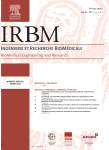
IRBM
Empowering Research Excellence in Biomedical FieldsIRBM, published by Elsevier Science Inc, stands at the forefront of research in the domains of Biomedical Engineering and Biophysics, boasting impressively high rankings with a Q1 category in both fields according to the 2023 evaluations. With an effective focus on cutting-edge innovations and methodologies, IRBM provides a vital platform for researchers, professionals, and students alike seeking to disseminate and access groundbreaking findings and developments. Its strong presence in the Scopus database, with ranks of #12 in Biochemistry, Genetics and Molecular Biology and #42 in Biomedical Engineering, places it in the top percentile of impactful journals in the field, making it a crucial resource for advancing knowledge and fostering collaboration. While the journal maintains a traditional subscription model, it continues to attract a diverse readership eager for insightful studies and reviews that push the boundaries of science and engineering. With a projected convergence of years extending to 2024, IRBM promises to remain a significant contributor to the ongoing dialogue in the life sciences.

Biomedical Signal Processing and Control
Empowering research at the intersection of engineering and health.Biomedical Signal Processing and Control is a premier academic journal published by ELSEVIER SCI LTD that stands at the forefront of the rapidly evolving fields of biomedical engineering, health informatics, and signal processing. With an impressive impact factor reflecting its scholarly influence and high standards of research, this journal has been recognized in the Q1 quartile category across multiple disciplines as of 2023. Specifically, it holds esteemed positions within Biomedical Engineering, Health Informatics, and Signal Processing, where it ranks in the top tier of its field on Scopus: #19/131, #21/138, and #47/303 respectively. Published continually from 2006 to 2024, the journal serves as a critical platform for researchers, healthcare professionals, and students, fostering innovation in signal processing techniques and their applications in biomedical systems. Access to cutting-edge research and methodologies makes it an indispensable resource for advancing knowledge and practice within these interdisciplinary domains.